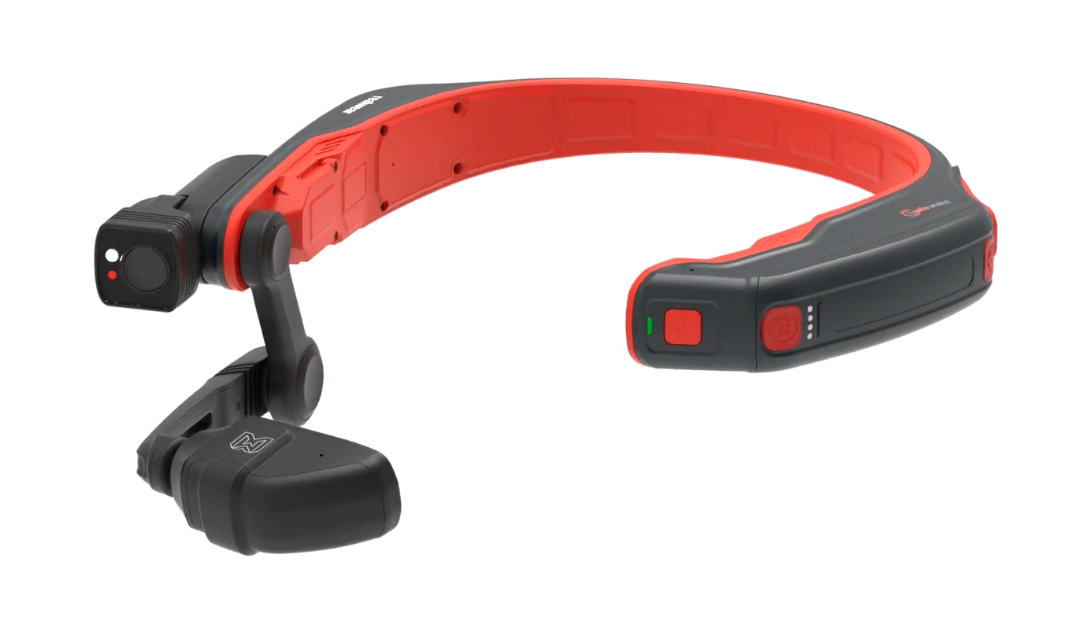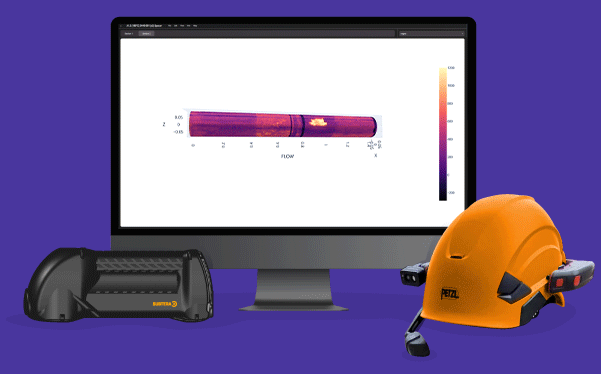The role of Assisted Reality (aR) in detecting CUI
Corrosion Under Insulation (CUI) remains a persistent challenge in the oil and gas sector. With high-value assets distributed across upstream, midstream, and downstream operations, undetected CUI can lead to costly unplanned downtimes, safety hazards, and significant repair expenses. Fortunately, advancements such as Subtera’s Pi360 THz cameras and connected worker technology, are beginning to make headway in helping asset integrity managers detect and address CUI more effectively, enabling better ways of working that include predictive maintenance and operational efficiency.
Why CUI is a Critical Issue
CUI occurs when moisture accumulates beneath insulation on pipelines and equipment, leading to corrosion that can go unnoticed until it becomes a major problem. The cost implications are substantial: an unplanned outage due to CUI can range from $30,000 to $50,000 per hour offshore and can exceed hundreds of thousands per hour in refining and petrochemical plants (source: GE Oil & Gas).
Historically, inspecting for CUI has been a labour-intensive process that involves manual inspections, insulation removal, and sending experts to remote or offshore sites, all of which can be costly and time-consuming.
The Impact of Digital Transformation in Oil and Gas
The global Covid-19 pandemic accelerated digital transformation across industries, oil and gas was no exception. Companies that had long relied on manual processes began to adopt digital tools such as IoT, cloud-based systems, and machine learning to improve operational efficiency and reduce costs. Yet, despite these advances, many companies still find themselves relying on outdated methods, like pen-and-paper checklists and manual data entry, which limit their ability to fully leverage the benefits of digital transformation.
The Role of Assisted Reality (aR) Wearables in CUI Detection
While digital tools enable data collection and monitoring, assisted reality (aR) wearables play a vital role in connecting field engineers with digital systems. In industries like oil and gas, where safety is crucial, aR wearables can provide hands-free real-time access to data, workflows, and live IoT feeds, enabling workers to make informed decisions without disrupting their tasks. Subtera’s S.T.A.R. system integrates with the RealWear Navigator® Z1, an ATEX Zone 1 certified aR wearable device..
RealWear Navigator® Z1
Hands-Free Operation: aR wearable technology enables engineers to safely navigate software assisted workflows. Using AI voice command, engineers can control our technology without removing their PPE gloves.
- Real-Time Collaboration: The integrated high-definition cameras within the RealWear Navigator® Z1 enable S.T.A.R. users to record high definition visible and thermal images of the asset being inspected. With integrated Microsoft® Teams, field engineers can also share this important information in real-time with colleagues; enabling senior asset integrity leaders to remotely support field engineers and see the CUI challenge through video and thermal cameras. This reduces the need for on-site visits and helps to quickly resolve potential CUI issues, cutting down on travel costs and delays.
- Enhanced Awareness: Wearables improve situational awareness by offering workers critical information exactly when they need it. S.T.A.R. work instructions are uploaded to the Z1 device before entering the processing facility, ensuring field engineers have access to the relevant task information, exactly when they need it.
View the RealWear Navigator® Z1 Datasheet.
Field Proven aR
Global oil and gas companies have begun to integrate connected worker solutions with aR wearables. For instance, intrinsically safe aR devices have been deployed across multiple operator sites to enable remote collaboration. Experts can “see through the eyes” of field technicians via video calls, guiding them through CUI inspections and maintenance tasks without needing to be physically present. This has not only reduced downtime but also minimised the risk of on-site hazards by ensuring that workers receive the necessary support in real time.
Similarly, companies are using digital systems to analyse historical and real-time data, helping teams identify which pipelines or assets are most at risk of CUI. By cross-referencing information such as temperature variations, humidity levels, and historical corrosion data, these systems can provide asset integrity managers with a heatmap of potential problem areas, enabling pre-emptive action.
The Business Case for Connected Worker Technology in CUI Management
For asset integrity managers, the integration of connected worker systems and aR wearables presents a compelling business case. The ability to identify CUI and other maintenance issues before they become critical not only extends the life of assets but also translates into significant cost savings. Consider that the average cost of unplanned downtime for oil and gas companies can reach up to $90 million annually (source: Deloitte). Proactive maintenance enabled by these technologies, reduces this figure, improving ROI and boosting operational efficiency.
Overcoming Adoption Challenges
Adopting new technologies in any industry always brings challenges. Companies must ensure that these solutions are not just technological novelties but are integrated seamlessly into daily operations. Key strategies to ensure successful adoption include:
- Training and Familiarisation: Ensuring that field workers are well-trained on how to use aR wearables effectively, with clear protocols for accessing digital insights.
- Integration with Existing Systems: aR tools must integrate smoothly with existing IoT and data management systems, ensuring continuity and ease of use.
- Focus on Safety and Durability: Devices used in the field must be rugged, intrinsically safe, and compatible with PPE, allowing uninterrupted use in harsh environments.
Building a Future-Ready Asset Integrity Strategy
The future of asset integrity lies at the intersection of digital, robotic and sensing technologies. Together, these tools enable asset integrity managers to reduce costs, minimising downtime, and improving safety. For companies looking to stay competitive and efficient in a rapidly evolving industry, embracing advanced sensing, digital insights and hands-free aR wearables is not just an option, it’s a necessity.
Share article:
You may also like to read
Signup to our newsletter
To hear the latest from Subtera about our technology, industry insights, case studies and company news, enter your email and we’ll send updates directly to your inbox.
By signing up, you agree to our privacy policy.
